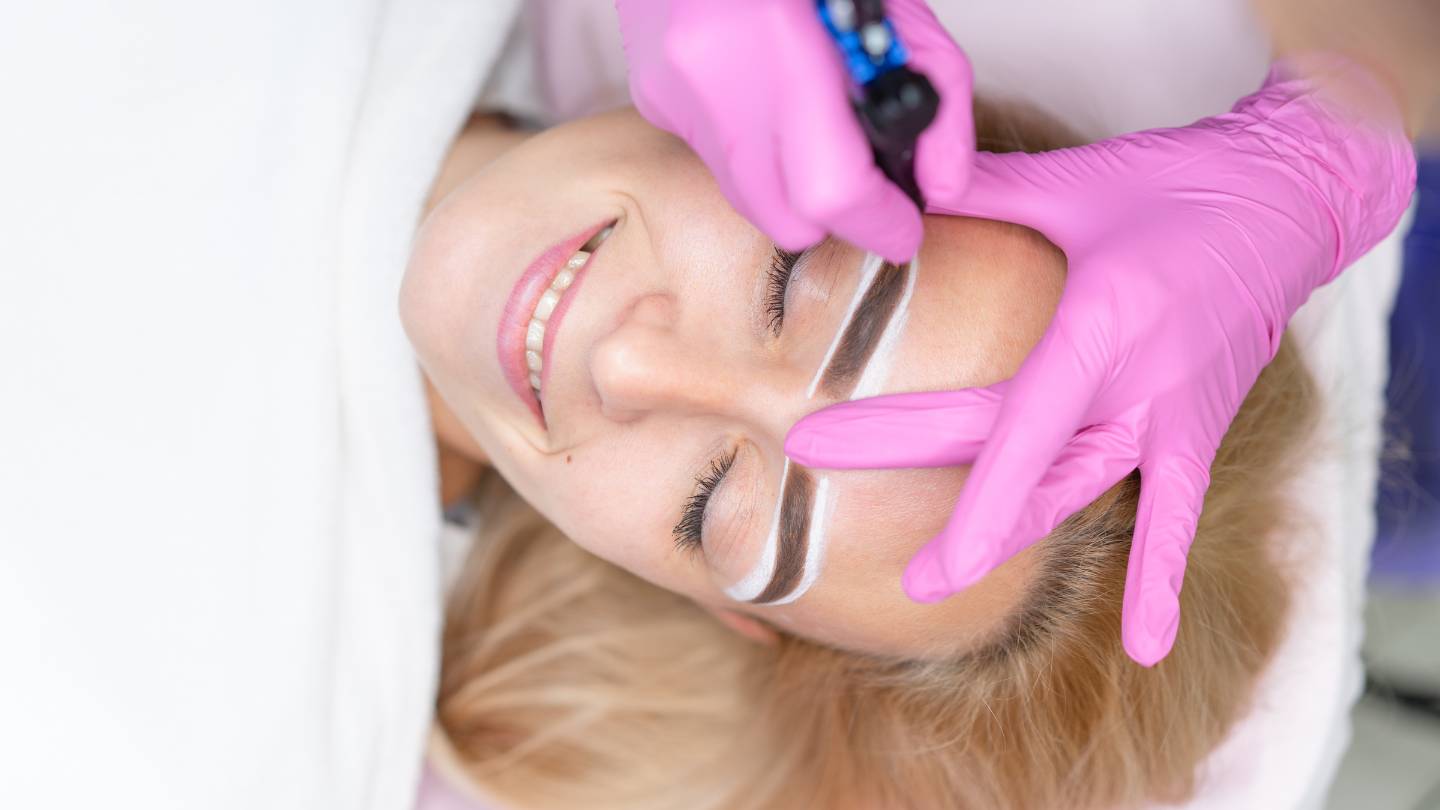Microblading is a popular cosmetic procedure for achieving long-lasting, natural-looking eyebrows. This technique involves using a fine blade to deposit pigment into the skin, creating the appearance of fuller brows.
However, proper aftercare is important to ensure the best possible results. One common concern is how to manage showering after microblading to prevent complications such as infection, pigment loss, and prolonged healing.
In this guide, we’ll search for the effects of showering after microblading, potential risks, and tips for keeping your brows in shape during recovery.
Let’s get straight to the point.
After microblading:
- Avoid getting your eyebrows wet for the first ten days to prevent infection, pigment loss, scarring, and prolonged healing.
- Clean your brows gently with lukewarm water and a mild cleanser, avoiding rubbing or scrubbing.
- Use aftercare ointment as recommended, and keep your brows dry by using a washcloth or sponge during showers.
The healing process takes 2-4 weeks, during which your brows experience flaking, fading, and settling stages. Avoid sun exposure and strenuous activities that cause sweating during recovery to maintain long-lasting results.
Risks Of Showering Too Soon After Microblading
Showering too soon after microblading can have several negative effects, impacting your healing process and the longevity of your newly microbladed brows. Let’s look at the main risks:
1. Infection
The microblading process involves creating small cuts in the skin, making it more vulnerable to infection. If your eyebrows get wet too soon after the procedure, bacteria from the water can enter these cuts, leading to redness, swelling, and, in severe cases, pus formation.
2. Pigment Loss
The pigment used in microblading needs time to settle into the skin. If the area is exposed to water too early, the pigment can fade prematurely, resulting in uneven colour or the need for an earlier touch-up than expected.
3. Scarring
Another potential risk is scarring. If your brows get wet too soon, the small cuts can reopen, leading to further irritation and potential scarring. This can also affect the appearance of your brows once they have healed.
4. Prolonged Healing
Water exposure can slow the healing process, potentially extending the time it takes for your brows to recover fully. Typically, the healing process takes about two weeks, but getting your brows wet prematurely can increase this timeline.
5. Excessive Scabbing
Microblading can cause minor scabbing, which is part of the normal healing process. However, exposing your brows to too much moisture early on can lead to larger scabs forming, slowing healing and increasing the risk of uneven pigment retention.
When To Wash Your Brows After Microblading?
To get the best results from your microblading, it’s essential to follow a proper aftercare routine. This includes knowing when and how to clean your brows safely.
1. First 24 Hours
In the first 24 hours following your microblading procedure, you should avoid getting your brows wet at all costs. This allows the pigment to settle and helps your skin begin the healing process. Any moisture exposure during this time can disrupt the pigment’s ability to stay in place.
2. Days 2-10: Gentle Cleaning
After the first day, gently clean your brows to remove excess fluids, ointment, or blood. It’s important to follow these steps carefully:
- Use lukewarm water and a mild, fragrance-free cleanser recommended by your microblading artist.
- Pat the brows dry gently with a clean cloth or paper towel. Avoid rubbing or scrubbing, as this can irritate the area.
- Apply aftercare ointment as directed by your artist. This helps keep the brows moist, aids in healing and prevents scabbing.
3. Avoid Full Showers On The Face
For the first ten days, avoid full-face showers. If you need to wash your hair, tilt your head to keep your brows dry.
Consider using a washcloth or sponge to clean your face without getting the brow area wet.
How To Shower After Microblading Without Damaging Your Brows?
You don’t have to avoid showering entirely after microblading—just be cautious about protecting your brows. Here are some practical ways to shower without damaging your freshly microbladed eyebrows:
1. Use A Damp Cloth
Instead of splashing water on your face, gently use a damp cloth to cleanse the areas around your brows. This helps keep water away from the microbladed area while allowing you to clean your face.
2. Tilt Your Head Back
When washing your hair, tilt your head back so that water runs down the back of your head instead of over your face. Consider using a handheld showerhead to have more control over where the water goes.
3. Cold Spoon Method
Place a cold metal spoon gently over your brows during your shower to shield them from any water splashes. This technique works well in short showers, but avoid extreme hot or cold temperatures to prevent irritation.
4. Use A Wet Paper Towel
Another simple technique is to wet a paper towel with lukewarm water and use it to dab around your brows gently. This method lets you control moisture levels and prevent excess water from reaching your brows.
5. Be Gentle With A Sponge
A slightly damp sponge can be a good tool for cleaning your face without getting your brows wet. Shake off excess water from the sponge and use it to clean around the brows carefully.
Conclusion
Microblading can give you beautifully shaped, semi-permanent eyebrows, but proper aftercare is essential to achieving the best results. Avoid getting your brows wet for the first ten days after your procedure, and follow a careful cleaning routine to prevent infection, pigment loss, and scarring.
With patience and care, you can ensure your microbladed brows look stunning and last long. By understanding the risks of showering too soon after microblading and taking the right precautions, you can enjoy beautiful, long-lasting results.
Always follow your microblading artist’s aftercare instructions and avoid activities that might damage your brows while they heal.
FAQs About Microblading
How Should I Protect My Eyebrows While Showering?
During the first few days after microblading, keeping your eyebrows dry is crucial. You can use a shower cap or a protective film over your eyebrows to prevent water from directly touching them.
Can I Wash My Face During The Healing Period?
Yes, you can wash your face, but avoid the eyebrow area. Use a gentle cleanser and pat your face dry instead of rubbing. Be careful not to disturb the scabs or the healing process.
What Happens If Water Touches My Eyebrows Too Soon?
If water comes into direct contact with your microbladed eyebrows too soon, it can soften the scabs and may lead to pigment loss or uneven healing. This can affect the final result of the microblading procedure.
Can I Use Hot Water When Showering?
It’s best to avoid hot water on your face during the initial healing period. Hot water can open up your pores and disrupt the healing process. Stick to lukewarm water when washing your face.
When Can I Resume Regular Showering Habits?
After the initial healing period, usually around 7-10 days, you can resume your regular showering habits. By this time, the scabs will have fallen off, and your eyebrows will be on their way to a full recovery.


